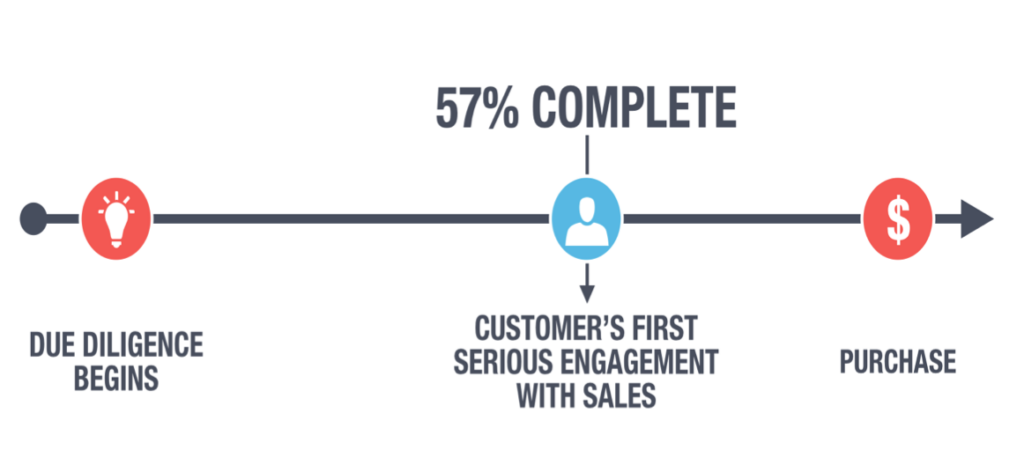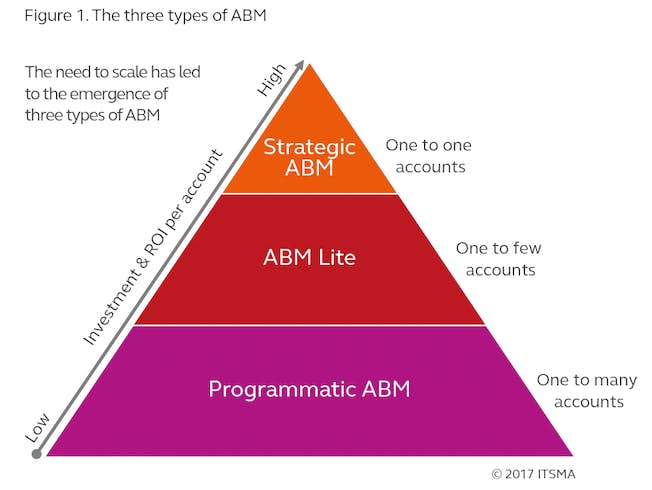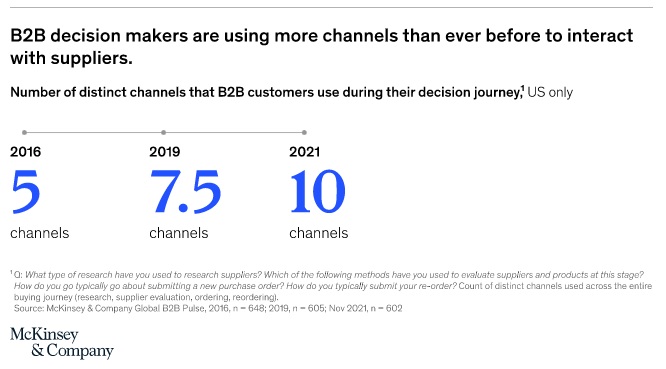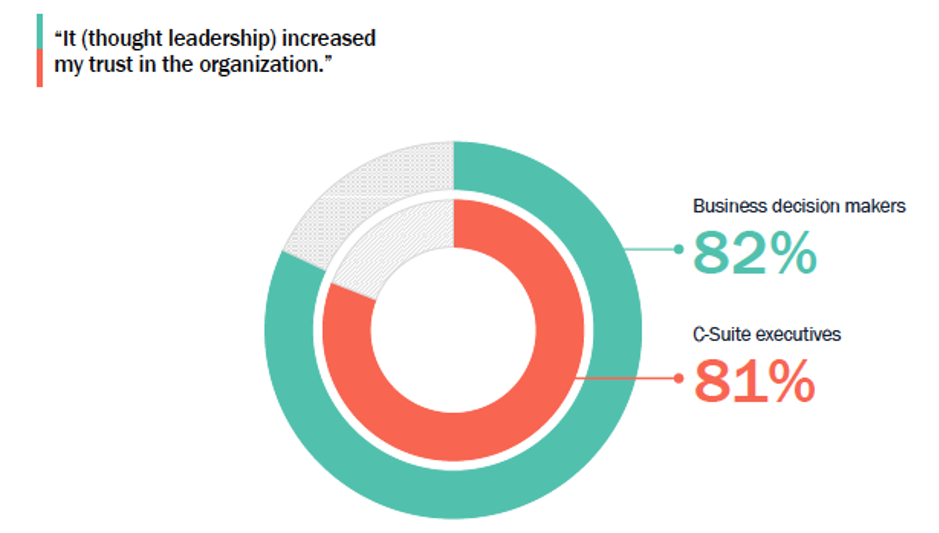The Strategic Guide to B2B Sales [Updated for 2023]
The requirements of a strong B2B sales strategy have radically changed over the past few years as the pandemic accelerated technology advancements, created new norms around the way sales teams operate, and led to elevated buyer expectations for their experience at every stage of the pipeline.
Today, sales professionals are required to learn new data-driven skills, work in hybrid or totally remote environments, and engage with buyers who have more information than ever before at their fingertips, meaning they’re depending less and less on sales reps for support.
To attract the right buyers, maintain a healthy pipeline, and reliably convert sales, companies have had to rethink “the way things have always been done” and get on board with a new era of B2B sales strategy development.
In this guide, we’ll cover the most important areas of focus for 2023, how to implement them, and ways to get your sales team on board with new changes quickly and effectively.
Quick Takeaways
- B2B buyers now do most of their vendor research independently before ever contacting a sales team. Your B2B sales strategy should include high-value content to inform buyers during this stage.
- ABM is now one of the top sales tactics for every kind of business and can be executed at several levels (one-to-one, one-to-few, and one-to-many).
- Establishing thought leadership is crucial for building trust and earning new business.
- Modern B2B sales strategies are highly data-driven and informed by real-time insight using tools like CRMs, business intelligence tools, and financial planning platforms.
- You can help your sales team get on board with a new B2B sales strategy by investing in training and skills development opportunities to help them adapt.
The Modern B2B Sales Strategy: 5 Key Focus Areas
Know the Modern Buyer
Modern B2B buyers are more savvy than ever before. They do most of their research and narrow down their options before ever reaching out to potential vendors. That means by the time your sales reps are talking with potential customers, they’ve established an impression of your brand and its solutions.

While you can’t totally control how potential customers will perceive you before they engage with your team, you can control the content you publish that helps to build that perception. It is critical that your sales team work together with marketing and get aligned about what’s being shared with target audiences at the top of the funnel.
Consider the way you target content, the topics you cover, the types of content you publish, the channels you use, and the way you competitively position yourself in your market. When your customers do reach out to formally begin the sales process, start with questions that determine what they already know and think about your company.
Incorporate ABM Tactics
Account-based marketing (ABM) is a B2B sales strategy rooted in hyper-personalized tactics that are tailored very specifically to each individual buyer’s needs and preferences. Historically, ABM has been considered a strategy reserved for high-ticket buyers and the B2B companies selling to them. But technology has largely democratized ABM in modern business landscapes.
Specifically, programmatic ABM (one to many accounts) and ABM lite (one to a few accounts) is now a popular strategy that leverages ABM through smart targeting rather than solely one-on-one interactions. These approaches are helpful for organizations without the resources or the need to execute one-on-one ABM but that still benefit from its premise.
Given that buyers now expect personalized experiences and for sellers to have knowledge of their unique needs and preferences, implementing ABM in some capacity is fast-becoming a competitive imperative in many industries.

Expand Your Sales Channels
According to McKinsey, buyers are now engaging with brands through more than 10 channels over the course of their buyer journey—including stages of the sales process. You’ll need a fully multichannel B2B sales strategy in order to reach all of your potential customers.

That means your reps must be trained to monitor and engage with buyers on more traditional channels like telephone and email as well as newer ones like social media, live chat, and video chat. You may also want to incorporate AI-powered options like chatbots to answer sales FAQs and get new leads pointed in the right direction after they make initial contact.
Establish Thought Leadership
Trust is critical to your B2B sales strategy in 2023—if a buyer feels like they can’t trust you, they are almost certainly not going to make a purchase from you. And since buyers are determining this through their research before they reach out to your sales team, it’s critical that you aim to build trust through thought leadership content.
Thought leadership content focuses on establishing your position as an expert in your industry through educational and engaging topics. This can include blog posts, ebooks, whitepapers, webinars, opinion pieces and more. Today, more than 80% of buyers say that thought leadership content is effective at increasing their trust in an organization.

Leverage Analytics for Insight
Last but not least, your B2B sales strategy must be data-driven and rooted in analytics insight in order to keep up with the fast-paced, multifaceted business landscape we operate in today.
Put the tools in place to enable real-time sales performance tracking, predictive forecasting, and customer behavior analysis that help you maintain a responsive and agile strategy. These tools may include your CRM system, business intelligence and financial planning platforms, and sales and marketing automation tools.
Getting Your Sales Team on Board
Change is rarely easy for organizations. The good news, however, is that most employees are recognizing the need to upskill and adopt new tools to meet modern business demands. Nearly 90% say they’re willing to learn new skills if employers help them do it!
You can encourage them to do so and gain buy-in with a few key steps:
- Communicate Change Effectively — Be honest, clear, and transparent about planned changes. Keep your employees in the loop about updates to your B2B sales strategy.
- Invest in Training — Train employees so that their skills and knowledge align with the tactics, tools, and approaches you use in your sales process.
- Help Employees Learn New Skills — Skills gaps don’t necessarily require new hires. Invest in your own employees by offering programs and opportunities to upskill and advance to new roles.
- Celebrate Small Successes — Big change doesn’t happen overnight. Celebrate small wins along the way to build momentum toward larger transformation.
Over to You
Many companies have realized that new demands surrounding their B2B sales strategy require them to seek out additional support for their in-house teams. Outsourcing is one of the smartest ways to access the tools and expertise you need to execute a confident strategy that delivers results.
At Televerde, we offer comprehensive marketing, sales, and customer service solutions rooted in industry best practices and customized to each of our client’s needs.
Contact us today to learn more about how we can help you grow your business.


